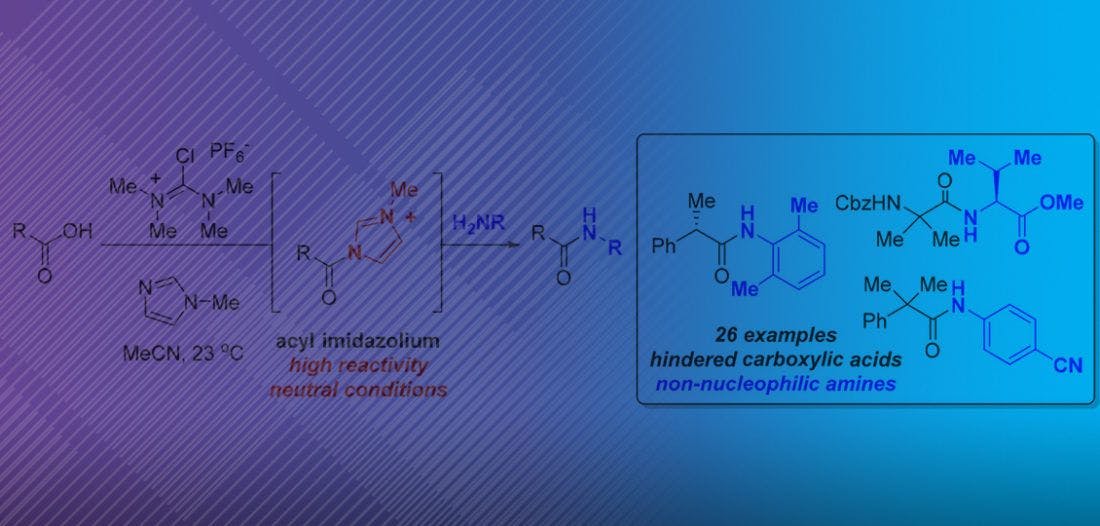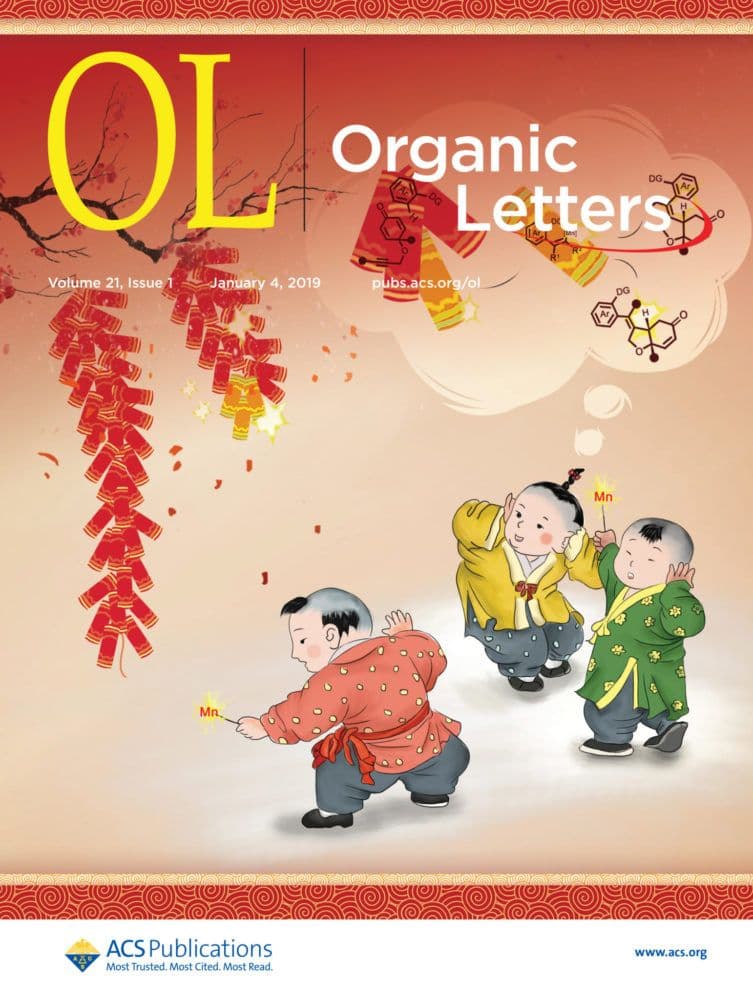Dr. Gregory L. Beutner, a principal scientist at Bristol-Myers Squibb, is the recipient of the 2019 Organic Letters Outstanding Publication of the Year Award Lectureship. He is being recognized for his team’s paper, “TCFH–NMI: Direct Access to N-Acyl Imidazoliums for Challenging Amide Bond Formations.” “Dr. Beutner’s paper in Organic Letters describes a wonderfully practical method […]

Dr. Gregory L. Beutner, a principal scientist at Bristol-Myers Squibb, is the recipient of the 2019 Organic Letters Outstanding Publication of the Year Award Lectureship. He is being recognized for his team’s paper, “TCFH–NMI: Direct Access to N-Acyl Imidazoliums for Challenging Amide Bond Formations.”
“Dr. Beutner’s paper in Organic Letters describes a wonderfully practical method for the formation of amides involving difficult reaction partners with commercially available reagents,” says Professor Erick M. Carreira, Editor-in-Chief of Organic Letters. “The study provides a brilliant, compelling solution because of the simplicity of starting materials (amines and carboxylic acids), convenience of reagents (tetramethylchloroformamidinium salt and methyl imidazole) that enable a wide range of peptide couplings.
“Amide bond-formation is one of the most commonly employed transformations in organic chemistry in both complex and simple settings,” Professor Carreira further explains. “Thanks to the endlessness of chemical structural and reaction space, challenges to even the most classic of reactions routinely surface. Dr. Beutner’s has identified an impressively reactive combination of reagents that effects amide formation of hindered and/or electronically challenging coupling partners. The examples showcased proceed in high yield without epimerization of potentially labile stereogenic centers. A particularly attractive aspect of the work is the fundamental insight gained from meticulously executed mechanistic studies. The work exemplifies cutting-edge research that is conducted in industry. Organic Letters is proud to serve as an interfacial platform for industry and academia that publishes innovative methods.”
This award honors the author of an outstanding letter published in the previous calendar year that demonstrates creativity and impact in the field of organic chemistry, and is sponsored by Organic Letters and the ACS Division of Organic Chemistry.
As this year’s winner, Dr. Beutner will receive an honorarium as well as travel funds to attend and present his research at a symposium in his honor at the ACS Fall National Meeting & Exposition in San Diego. The session will also celebrate Professor Scott E. Denmark, recipient of The Journal of Organic Chemistry Outstanding Publication of the Year Award Lectureship for 2019.
Read all of Dr. Gregory L. Beutner’s articles from ACS Publications.
An Interview with Dr. Gregory L. Beutner
I caught up with Dr. Beutner recently to learn more about his research and what he will be doing next. Here are the highlights of our conversation.
I think it is an honor to have this work recognized by the community and I am proud to represent the great work we are doing at BMS. But in a more general sense, I think it highlights the impactful contributions that process chemists make to the field of organic synthesis. Oftentimes process chemists are not discovering new disconnections or unprecedented transformations, but rather devising simple, reliable, and robust methods for well-known transformations. And you cannot get any more well-known than amide bond formation, so I am glad to be able to make a practical contribution to this field. Looking around my own department and talking to colleagues, I can see that this is really impacting people’s research, which is a great reward in and of itself.
Our attempts to optimize what appeared to be a straightforward amide bond formation led us to a long-recognized but seemingly mundane problem … the problem of amide bond formation with weakly nucleophilic amines. This issue was then compounded by the risk of epimerization at a stereogenic center in our carboxylic acid coupling partner. These two factors really challenged us to find a novel solution to the problem. I had been interested in TCFH as a reagent for some time and this was a great opportunity to showcase its strengths compared to more common coupling reagents. TCFH is the precursor to many well-known uronium-based peptide coupling reagents, like HATU. So despite its exotic appearance, it is actually readily available, cheap and stable.
All of our work as process chemists is done in a highly collaborative environment, not only between chemists but also together with chemical engineers and analytical chemists. Therefore, if we are going to be innovative, we need to have explicable, data-driven arguments to make a case for change. My coauthor Ian Young and worked together and made sure to make a clear case that we could explain to chemists and non-chemists alike to build support for the advantages of using TCFH. In a more global sense, this work is allowing us to bring new drugs to market rapidly, efficiently and economically. So the benefits to patients with unmet medical needs and the environment are clear.
I really try to let thoughts and insights about reaction mechanism drive my decisions as a process chemist. And the best way to do this is to leverage the concepts and techniques of physical organic chemistry. This was an important lesson I learned during my Ph.D. and postdoc studies. If we can understand how a reaction works, we can provide convincing answers to “why” questions and have confidence that we have an understanding of how to address unanticipated problems in a rational manner. I think there is a perception that doing mechanistic work is a slow process that is best done after the discovery and optimization of some reaction. But I totally disagree. With modern tools and techniques, we can quickly gain a basic understanding of a reaction and use mechanistic insights to drive optimization. Rather than slowing down the process, it can really accelerate things.
A big part of my research is focused on adapting novel technologies to large-scale chemistry. Specifically, I am very interested in the application of electrochemistry to the synthesis of pharmaceutically relevant structures. Recently, there has been a lot of excitement and renewed interest in this area. Looking at academic research, it is clear that there are many applications to our work. However, we need to understand this chemistry at a fundamental level if we are going to use it at large scale. We need to understand how reliable electrochemistry is and what factors affect its performance. This is a really exciting mechanistic challenge and it is the main focus of my work these days.
As I pointed out above, process research is a highly collaborative endeavor. The timelines we work under and the level of rigor applied to our results can seem overwhelming at times. But when you have a good team, as we did on this paper, you can really accomplish something impactful. So I would be remiss if I did not acknowledge the contributions of my colleagues, Matt, Jay, Merrill, Qingmei and Hyunsoo who helped us take this work from a single substrate and expand it to the broad scope demonstrated in the paper.
